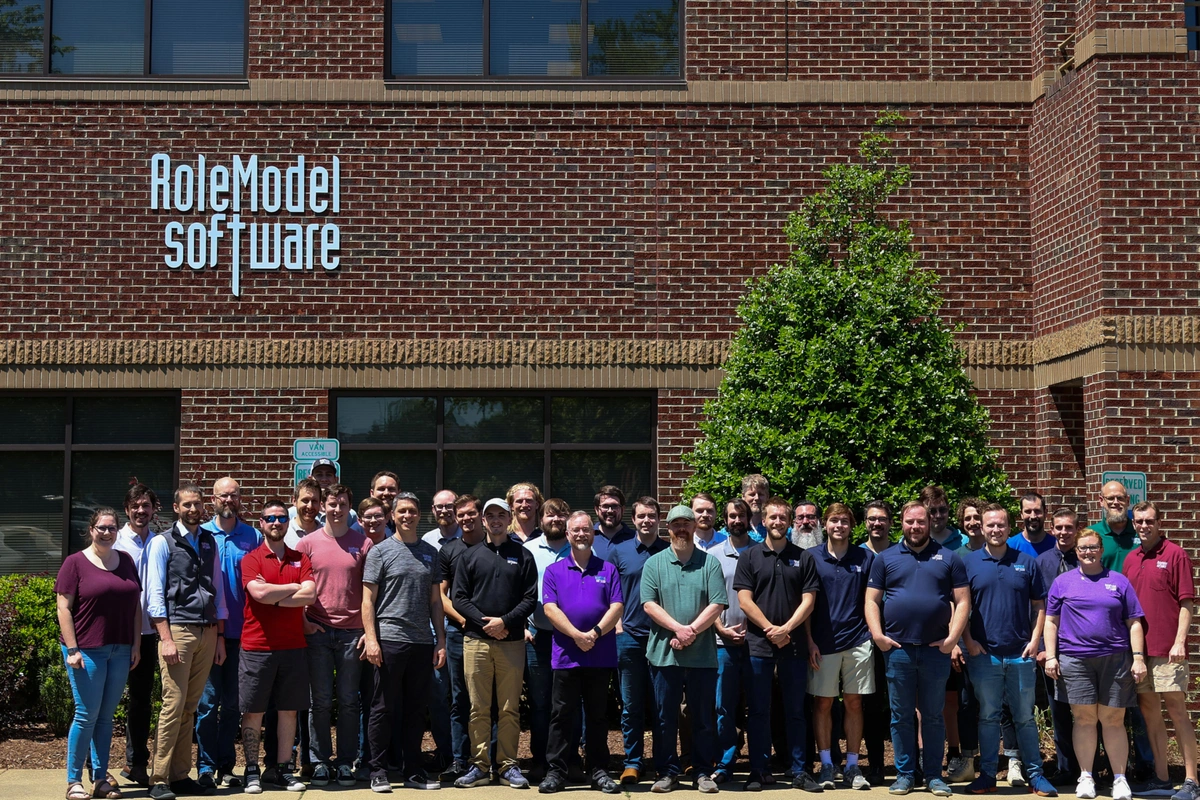•June 06, 2024

In May, we gathered for our quarterly CCC Days (CCC stands for our core values of Character, Collaboration, and Craftsmanship). This CCC Days was particularly special; it was the last in our office building, which we have been in for seven years. As we look forward to the future, we are grateful for all the work that got us to this point.
Keeping with our 2024 theme Impact Mindset and the RoleModel Way of Selecting Technology, our experiments focused on exploring new technologies and approaches that would help us work more effectively as a team and deliver greater business value to our clients. We’d like to highlight some of our experiments with our LightningCAD framework and our new project management tool, Linear.
LightningCAD is our framework for building our Design Price Quote (DPQ) solutions (Railing Designer, Dock Designer, Flow Designer, Building Designer) and other custom design solutions for systemized products with geometric variability.
Our first experiment continued the work we have been doing to create paths and manipulate curves (specifically Bezier curves), which will open up new features and higher performance. Until recently, almost everything in LightningCAD was represented as polygons/points, making it challenging to represent curves without many points, which slows down performance. This project improved our support of curves in path and direct editing.
Another LightningCAD experiment examined how we build the UI for our design tools. We’ve used many frameworks over the years, but we’ve been looking for a simple standard approach that is easy to customize and fits well with the technology stacks we use in our projects. The experiment focused on extending the web components experimentation and patterns we’ve been working on in another project and applying them to the core framework. This new approach simplifies the code, gives us new ways to build our applications, and will help us be more flexible as we build additional features into LightningCAD.
Our last LightningCAD experiment was a proof of concept for Deck Designer. In recent conversations with possible partners for Railing Designer, we realized there is a market for Deck Designer software since many companies that build railings also build decks. This experiment explored the channel for a deck design tool and the essential features, including delivering a proof of concept application to share with potential customers.
To further standardize our approach, we use Linear as our project management software tool of choice. Linear has tools to help us better apply the RoleModel Way of Project Management and communicate effectively with our customers about projects.
In most cases, our customers need to know what high-level features are working on. For this experiment, we leveraged the Linear API to create a customer view of an iteration, project, and roadmap. We want the new system to be flexible, with a simplified view for our customers to interact with as we do standups or planning meetings. Something that makes it as easy as possible to get involved with a high-level view to see where the project is at and also be able to submit bugs, issues, and discussion items.
As RoleModel has grown, we’ve focused on having specific metrics that are leading indicators of the organization's health. For our project management practices, we’ve organized those into a collection of metrics called the PM scorecard. With Linear’s GraphQL API, we built some quantitative measures for throughput and on-time delivery that we’ve previously had to measure qualitatively. This allows us to collect data in the course of doing our work that brings insight to the health project and can help us detect problems sooner.
It was great to close out our time in our office with everyone in person. We look forward to sharing updates from our next CCC Days in our new headquarters!